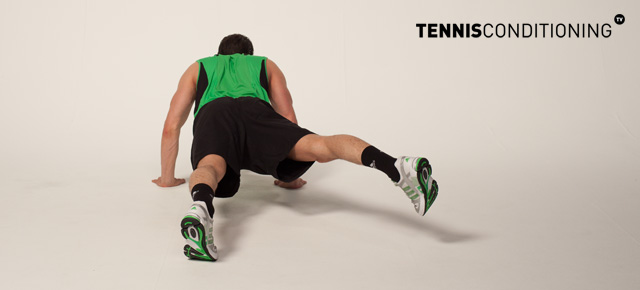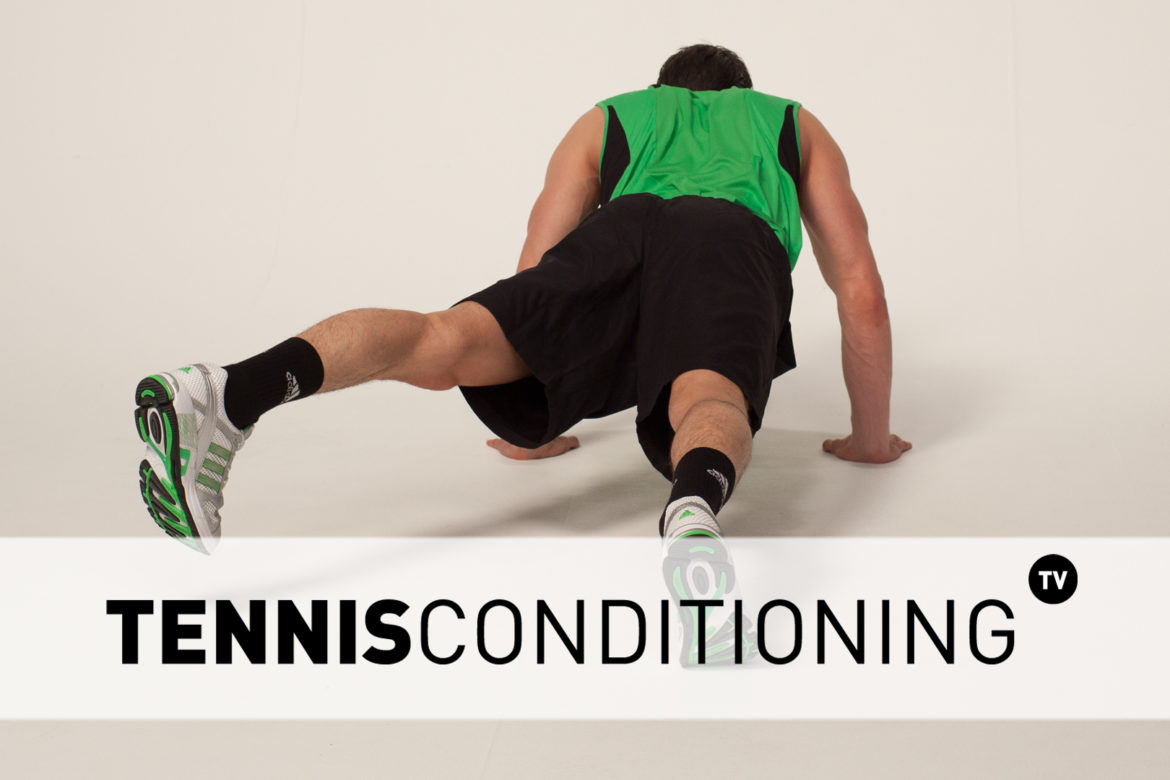The Prone Abductor Lateral Kicks is a functional training exercise for beginners to improve synergy of the neuromuscular system, core stability, body control and coordination.
During the Prone Abductor Lateral Kicks the focus is on improving neuromuscular system efficiency. The neuromuscular system works in sync when the athlete moves on the court and hits the ball.
Emphasis is on the synchronized activation of various muscle groups and stabilizer development to improve performance and avoid injuries.
If the athlete cannot maintain neutral pelvic position during the Prone Abductor Lateral Kicks then decrease the speed of hip abduction/adduction.
Prone Abductor Lateral Kicks Progression
If you use additional weights…make sure you use appropriate weight so you can control the action throughout the entire range of motion. Otherwise you defeat the purpose of the exercise.
Very often, people use too much resistance and they become sloppy. Especially when it comes to maintaining core stability repetitively.
Also, don’t just progress with adding more weight. First, maximize the speed while maintaining perfect form.
If that’s still too easy then change the change your hand position.
Here are the progression levels:
- Beginner: wide hand position
- Advanced: shoulder-width hand position
- Professional: narrow hand position
Prone Abductor Lateral Kicks Description

- Face down and position arms shoulder-width apart and feet close together; place palm of the hand underneath the shoulders; extend elbows; hips are in neutral pelvic position; look forward
- Abduct the left hip by kicking out the left leg as far as possible; maintain neutral pelvic position; look forward
- Adduct the left hip, thereby swing left leg back into starting position; maintain neutral pelvic position; look forward
- As soon as left foot touches the right foot, abduct the right hip by kicking out the right leg as far as possible; maintain neutral pelvic position; look forward
- Adduct the right hip, thereby swing right leg back into starting position; maintain neutral pelvic position; look forward
Training Zone
We provide you with some more workouts and training tips you may be interested in to optimize your training.
Also, make sure that you warm up properly before and stretch out after your training session.

